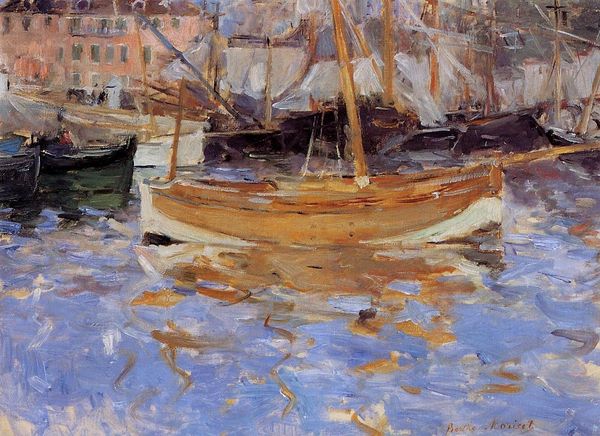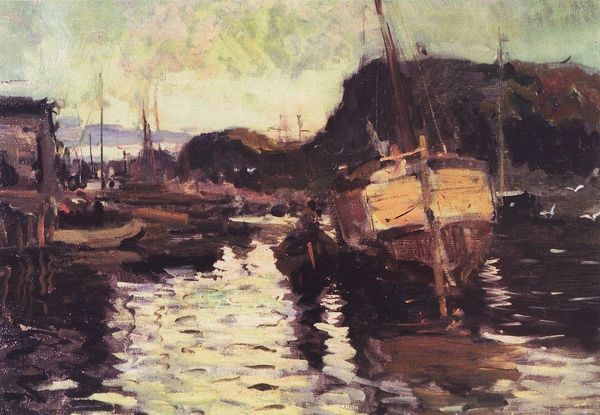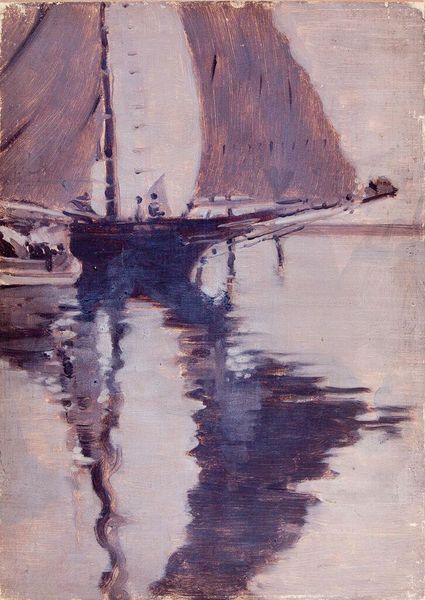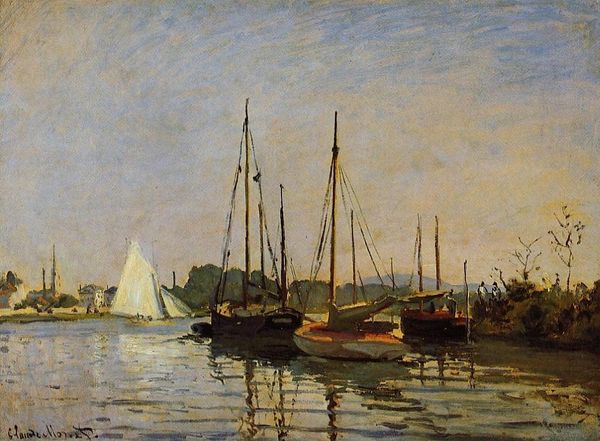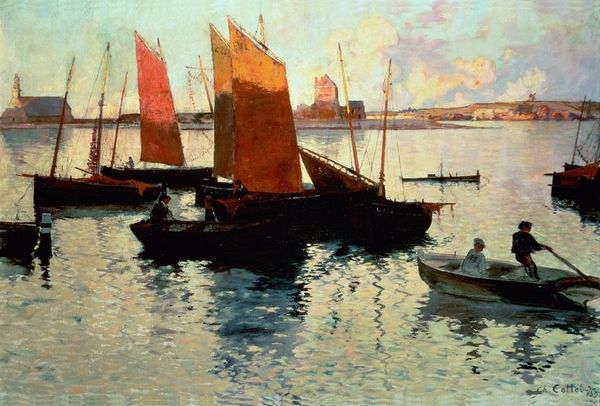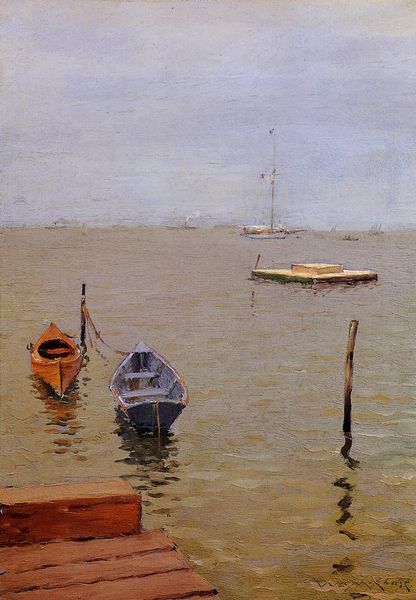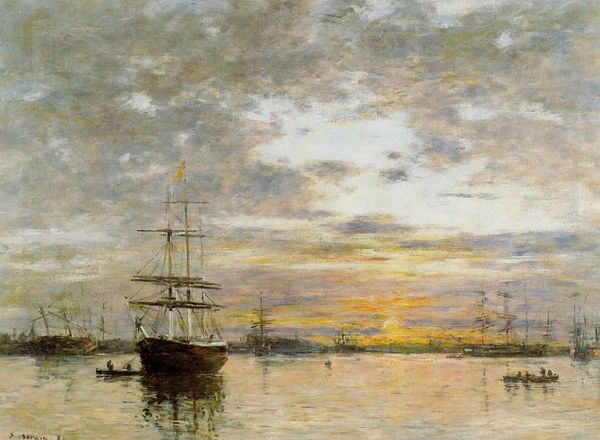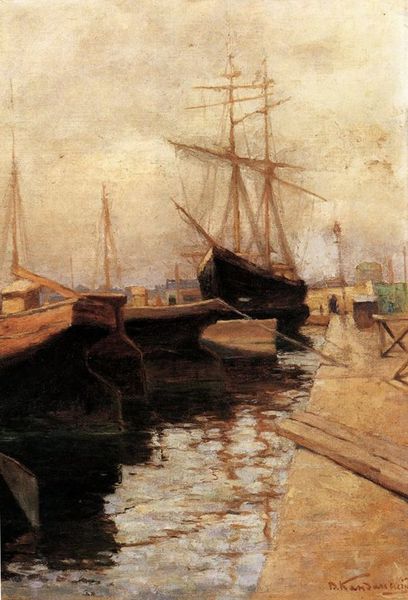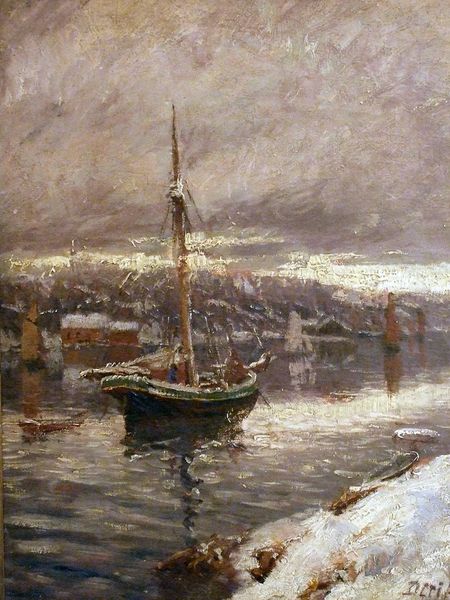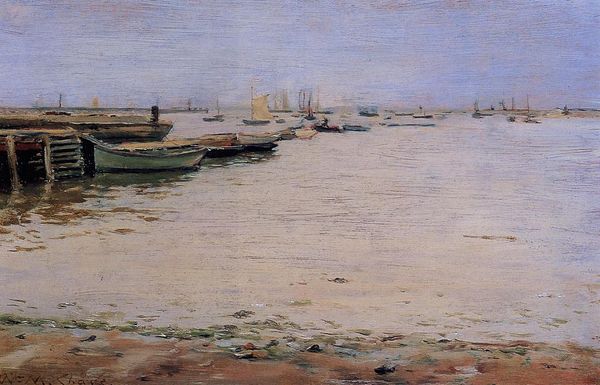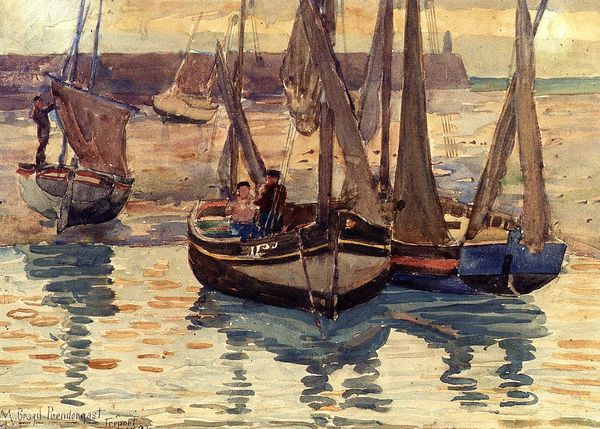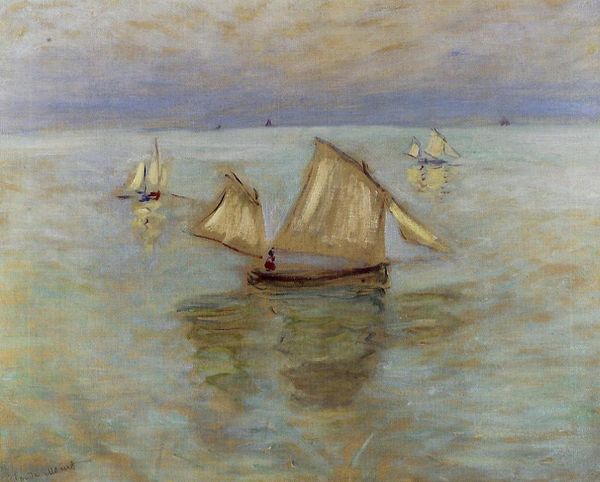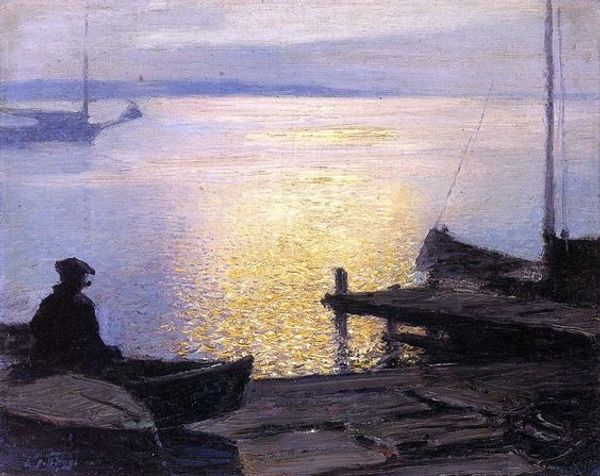
Copyright: Public domain
Editor: Here we have Korovin's "White Night in Northern Norway" from 1890, rendered in oil. The subdued palette and blurred forms create this feeling of hazy stillness. How do you interpret this work purely from its formal qualities? Curator: The painting intrigues as it treads between representation and abstraction. Note the almost complete lack of hard lines. Instead, Korovin relies on juxtaposed patches of color and value to evoke forms, which is quite advanced formally. Editor: You can certainly see the ships emerge from the water. What do you mean by "advanced"? Curator: Advanced for its time. Look at the surface texture – the impasto in the reflected light is daring. Observe how he abandons traditional modeling for a flatter, more decorative arrangement of tones. This emphasis on surface and material, rather than illusionism, anticipates later modernist concerns. Editor: So the way the paint is applied is the message, as much as what it shows? Curator: Precisely. Semiotically, we might even argue the “ships” serve primarily as armatures for exploring the interplay of light and texture. Ask yourself, is it fundamentally about the ships, or the experience of light on water rendered through pigment? Editor: I hadn't thought about it that way, about questioning what takes prominence - that's fascinating. Thank you. Curator: A pleasure. Reflecting on the material components can truly enrich one’s perception of even representational paintings.
Comments
No comments
Be the first to comment and join the conversation on the ultimate creative platform.
